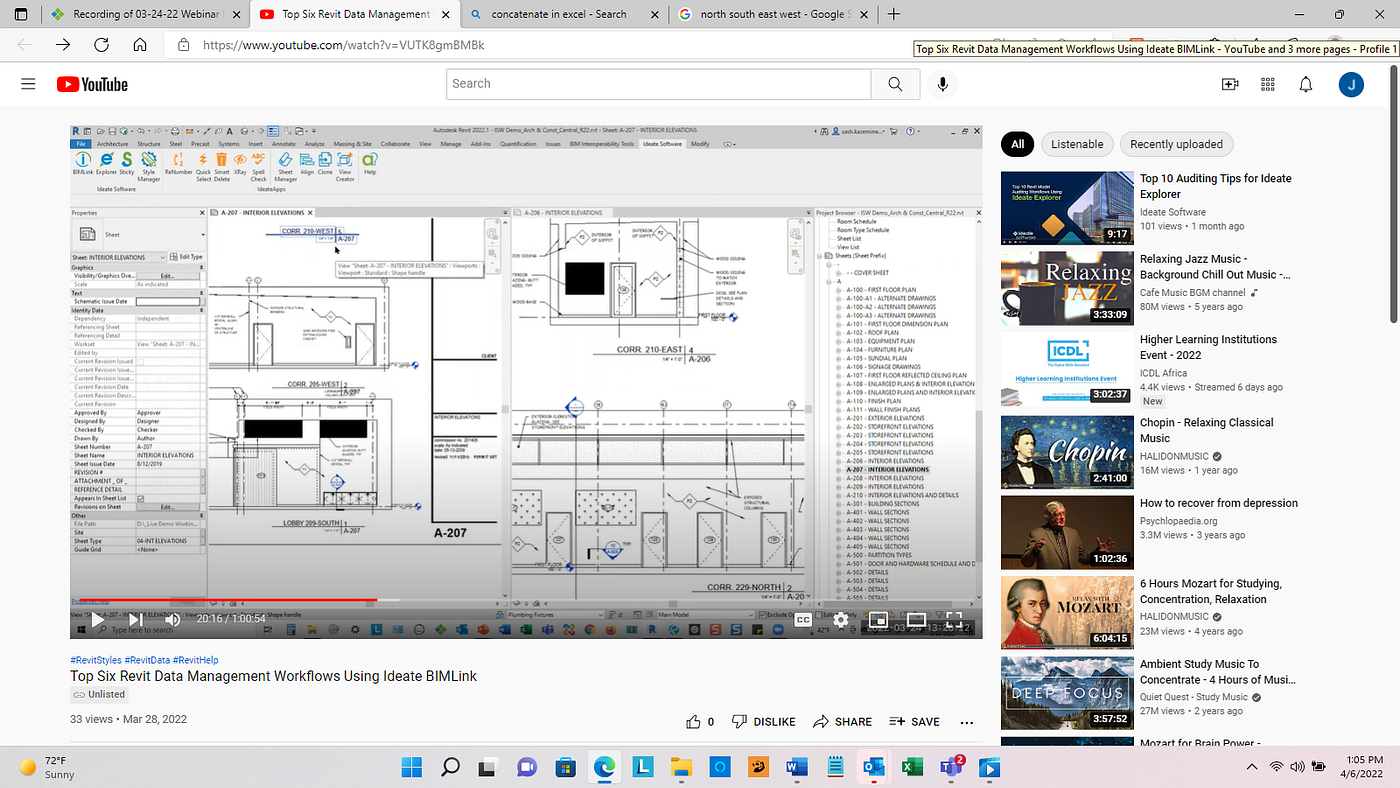Revit Plugins and Tools: Enhancing Your BIM Journey
Wiki Article
Mastering the Art of Data Integration: Just How to Seamlessly Import Excel Files Into Revit
In this article, we will certainly guide you via the procedure of grasping the art of data integration. Obtain prepared to prepare your Excel information easily and follow our step-by-step guide to import documents right into Revit. With our ideal methods, you'll attain data assimilation success in no time.Understanding the Significance of Information Integration in Revit
Understanding the significance of data assimilation in Revit is vital for seamless importing of Excel documents. It enables you to effectively update and handle details throughout the whole task when you incorporate information from Excel right into Revit. This assimilation ensures that your design and building process is precise and updated.By incorporating information, you can quickly import and update specifications, timetables, and even geometry in Revit. This removes the demand for hand-operated information access, saving you time and decreasing the threat of mistakes. With Revit's information assimilation capacities, you can keep consistency and accuracy in your task, while likewise improving cooperation amongst staff member.

Checking Out the Excel Data Style for Revit Assimilation

In order to successfully incorporate Excel documents into Revit, it is important to guarantee that the data is formatted appropriately. This consists of correctly labeling rows and columns, along with structuring the data in such a way that is compatible with Revit's information schema. Revit utilizes particular parameters and groups to organize information, so it is very important to line up the Excel information with these specifications to guarantee a smooth combination.
Furthermore, it is important to keep in mind that Revit only sustains certain information types when importing from Excel. These consist of text, numbers, and days. Any type of various other data types, such as solutions or conditional format, will not be recognized by Revit and may trigger concerns during the assimilation process.
Preparing Your Excel Information for Seamless Import Into Revit
To make sure a smooth integration process, you'll need to properly format and label the columns and rows in your Excel information before importing it into Revit. Beginning by analyzing your Excel information and recognizing which columns and rows contain relevant details for your Revit job.Next, ensure that the information in each column is correctly formatted. If you have a column for dimensions, make certain that all dimensions are consistently formatted in the very same systems of measurement. Revit counts on constant format to precisely interpret and import data.
Additionally, it is necessary to check for any type of empty cells or incongruities web link in your information. Revit might not have the ability to review or import data from cells that are empty or include mistakes. Therefore, it is advised to review your Excel information and clean up any disparities prior to importing it into Revit.
Step-By-Step Guide to Importing Excel Files Into Revit
Once you have actually appropriately formatted and identified your Excel data, you can conveniently import it into Revit by following this step-by-step overview. To click resources begin, open Revit and browse to the "Insert" tab. Click "Import CAD" and choose "Import Excel" from the dropdown menu. A brand-new window will show up, asking you to locate the Excel documents you wish to import. Browse your computer system and choose the Excel file, after that click "Open."Next, a dialog box will certainly appear, permitting you to customize the import settings. Below, you can pick the worksheet you wish to import, specify the series of cells to import, and select the appropriate systems for your information. When you have actually made your choices, click "OK" to proceed.
Revit will certainly currently present a sneak peek of your Excel information. Take a minute to make certain and evaluate the sneak peek that everything looks right. If required, you can make adjustments to the import setups by clicking the "Settings" button.
Ideal Practices for Data Combination Success in Revit
Make sure you comply with these finest methods to make sure effective assimilation of information in Revit. It is critical to arrange your information in Excel prior to importing it into Revit. Be conscious of the systems and information types when mapping the information, as any discrepancies can lead to errors in the integration procedure.An additional vital technique is to regularly validate and upgrade your information. As your job progresses, it is vital to keep your Excel file approximately day with any type of changes made in Revit. This will certainly aid preserve the accuracy and uniformity of your information across both platforms. Additionally, utilize information validation devices within Revit to recognize any type of errors or incongruities in the incorporated data.
Finally, it is advised to establish a clear workflow for information integration. This includes specifying obligations and duties, establishing an interaction channel in between team participants, and establishing a normal tempo for information updates and evaluations. By following these finest practices, you can ensure a successful and smooth integration of information in Revit, inevitably enhancing the efficiency and accuracy of your task.
Conclusion
To conclude, mastering the art of information combination is essential for smooth import of Excel files right into Revit. Recognizing the value of data combination in Revit is go to my site the initial step towards effective assimilation. Exploring the Excel data layout for Revit integration helps in recognizing the demands and constraints. Preparing the Excel data appropriately and adhering to a detailed guide is vital for a smooth import procedure. By adhering to ideal practices, you can ensure data combination success in Revit and make one of the most out of your task.When importing information from Excel right into Revit, it is vital to recognize the documents layout and just how it can influence the combination procedure (revit add ins). Revit uses specific parameters and groups to arrange data, so it is essential to align the Excel data with these criteria to make certain a smooth combination
Be mindful of the information and systems types when mapping the information, as any kind of disparities can lead to mistakes in the combination process.
Furthermore, make use of data recognition tools within Revit to recognize any type of errors or disparities in the incorporated information.

Report this wiki page